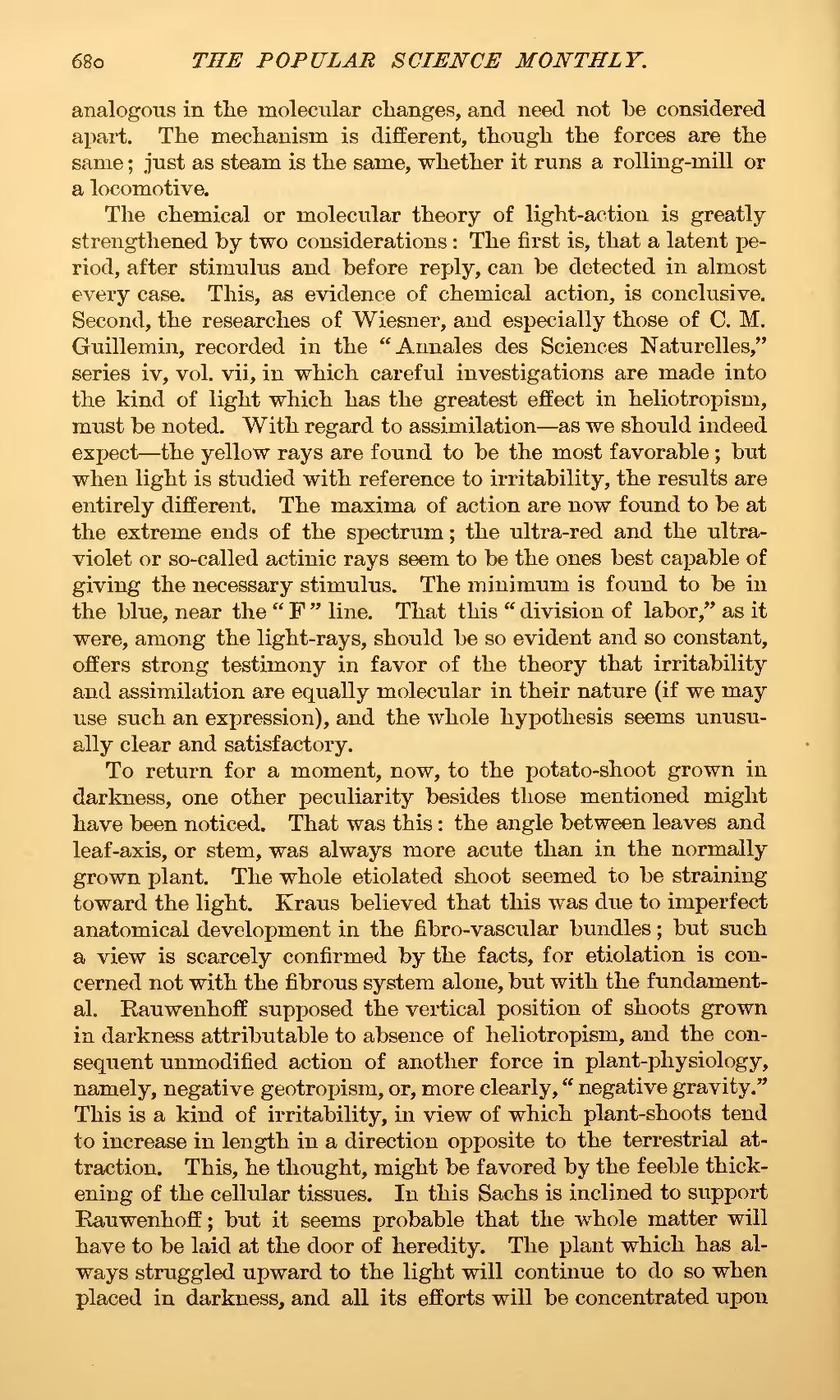analogous in the molecular changes, and need not be considered apart. The mechanism is different, though the forces are the same; just as steam is the same, whether it runs a rolling-mill or a locomotive.
The chemical or molecular theory of light-action is greatly strengthened by two considerations: The first is, that a latent period, after stimulus and before reply, can be detected in almost every case. This, as evidence of chemical action, is conclusive. Second, the researches of Wiesner, and especially those of C. M. Guillemin, recorded in the "Annales des Sciences Naturelles," series iv, vol. vii, in which careful investigations are made into the kind of light which has the greatest effect in heliotropism, must be noted. With regard to assimilation—as we should indeed expect—the yellow rays are found to be the most favorable; but when light is studied with reference to irritability, the results are entirely different. The maxima of action are now found to be at the extreme ends of the spectrum; the ultra-red and the ultraviolet or so-called actinic rays seem to be the ones best capable of giving the necessary stimulus. The minimum is found to be in the blue, near the "F" line. That this "division of labor," as it were, among the light-rays, should be so evident and so constant, offers strong testimony in favor of the theory that irritability and assimilation are equally molecular in their nature (if we may use such an expression), and the whole hypothesis seems unusually clear and satisfactory.
To return for a moment, now, to the potato-shoot grown in darkness, one other peculiarity besides those mentioned might have been noticed. That was this: the angle between leaves and leaf-axis, or stem, was always more acute than in the normally grown plant. The whole etiolated shoot seemed to be straining toward the light. Kraus believed that this was due to imperfect anatomical development in the fibro-vascular bundles; but such a view is scarcely confirmed by the facts, for etiolation is concerned not with the fibrous system alone, but with the fundamental. Rauwenhoff supposed the vertical position of shoots grown in darkness attributable to absence of heliotropism, and the consequent unmodified action of another force in plant-physiology, namely, negative geotropism, or, more clearly, "negative gravity." This is a kind of irritability, in view of which plant-shoots tend to increase in length in a direction opposite to the terrestrial attraction. This, he thought, might be favored by the feeble thickening of the cellular tissues. In this Sachs is inclined to support Rauwenhoff; but it seems probable that the whole matter will have to be laid at the door of heredity. The plant which has always struggled upward to the light will continue to do so when placed in darkness, and all its efforts will be concentrated upon
